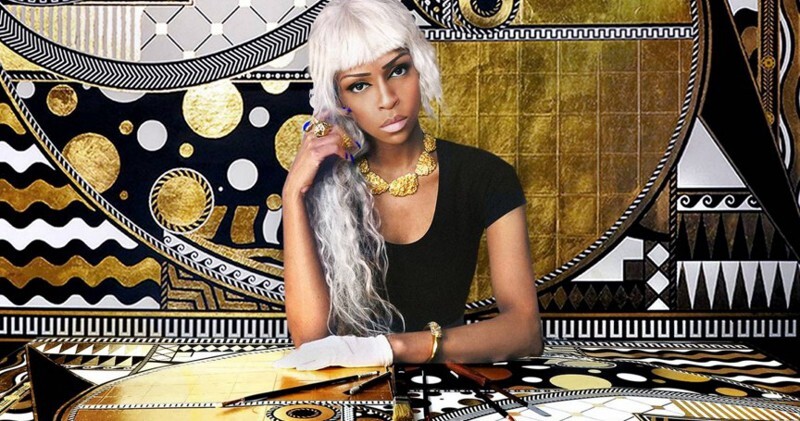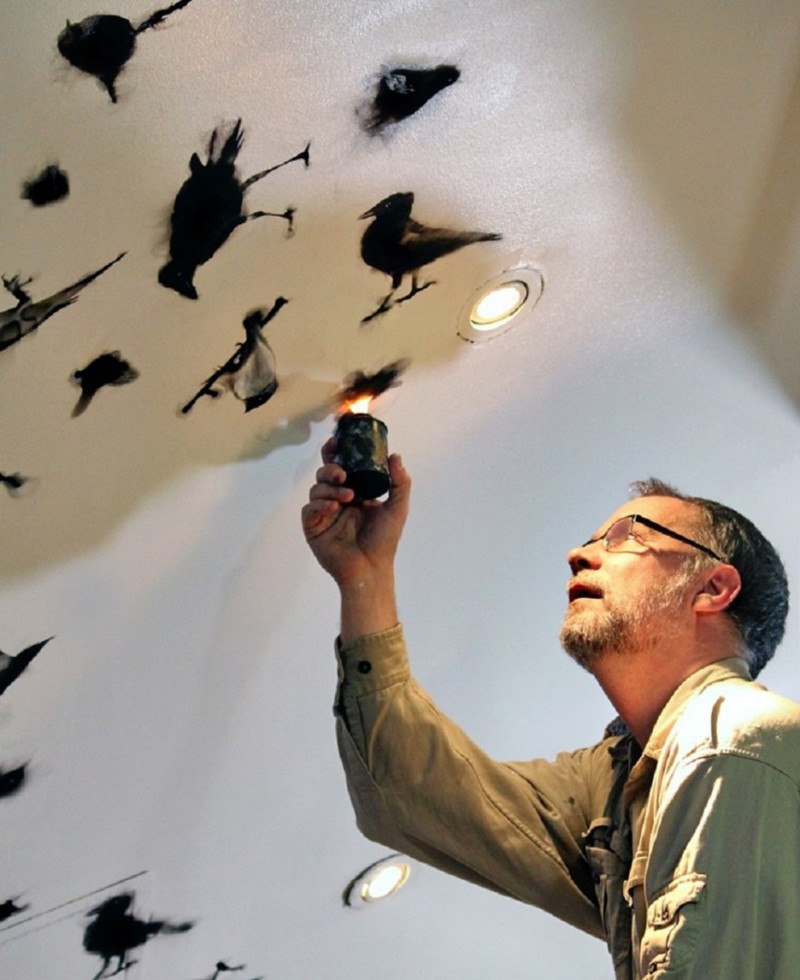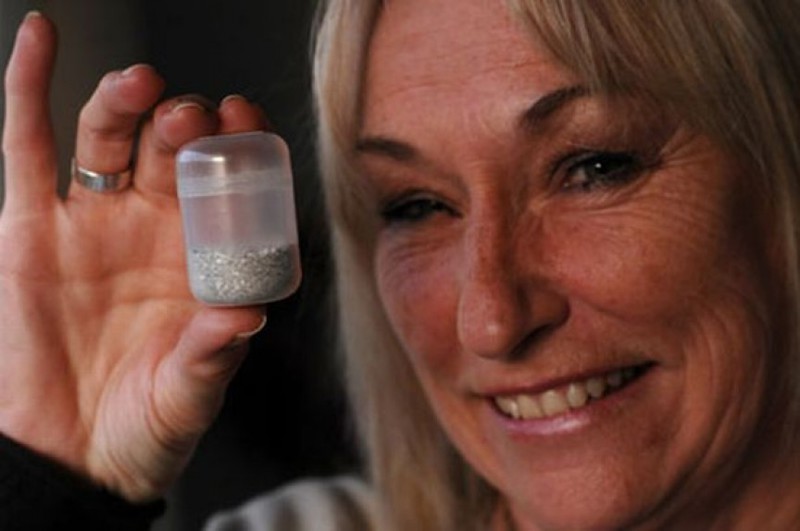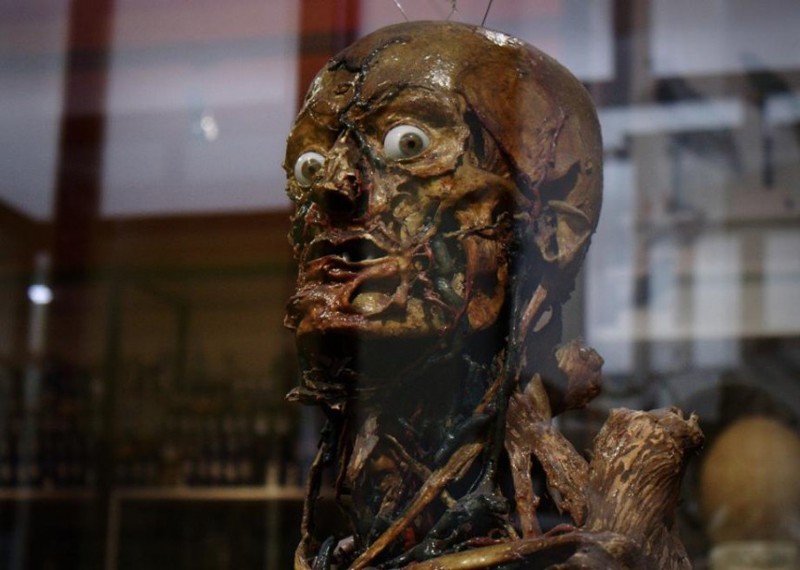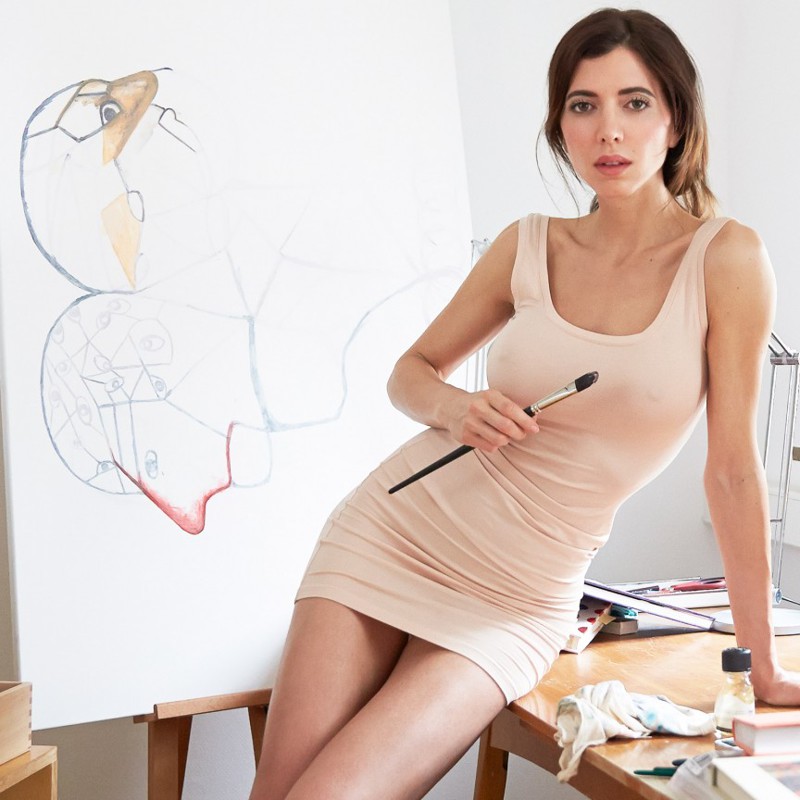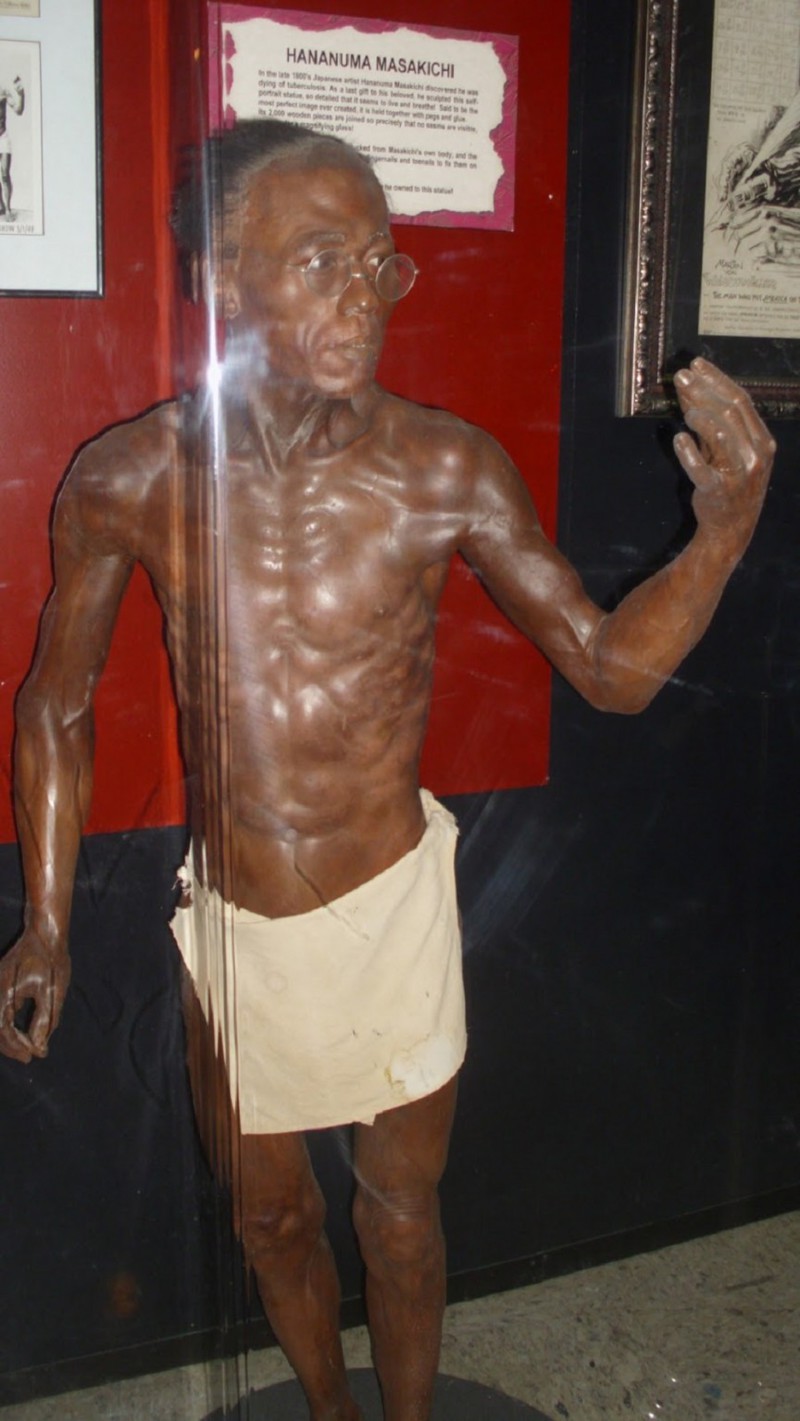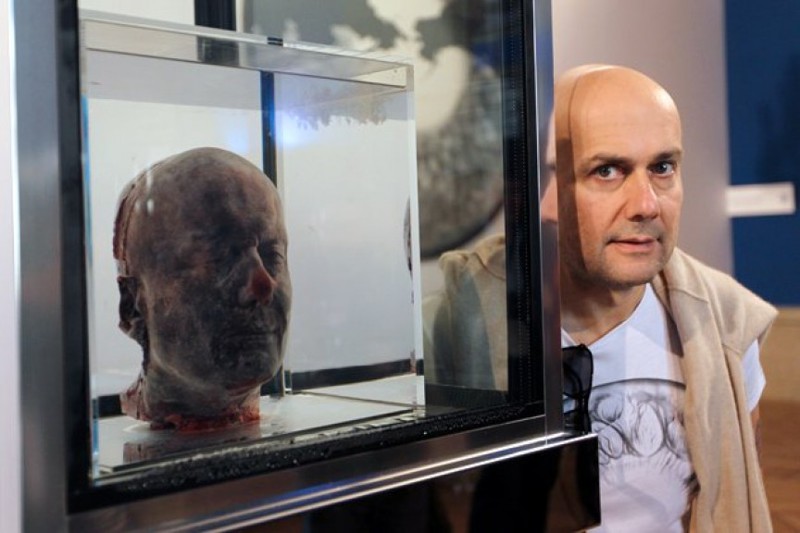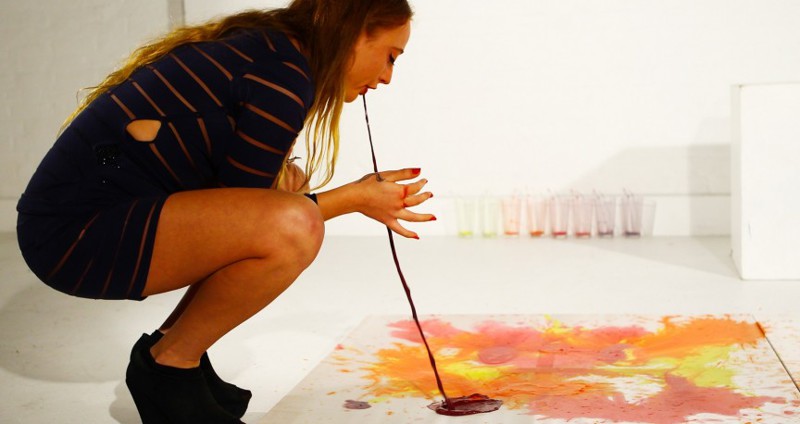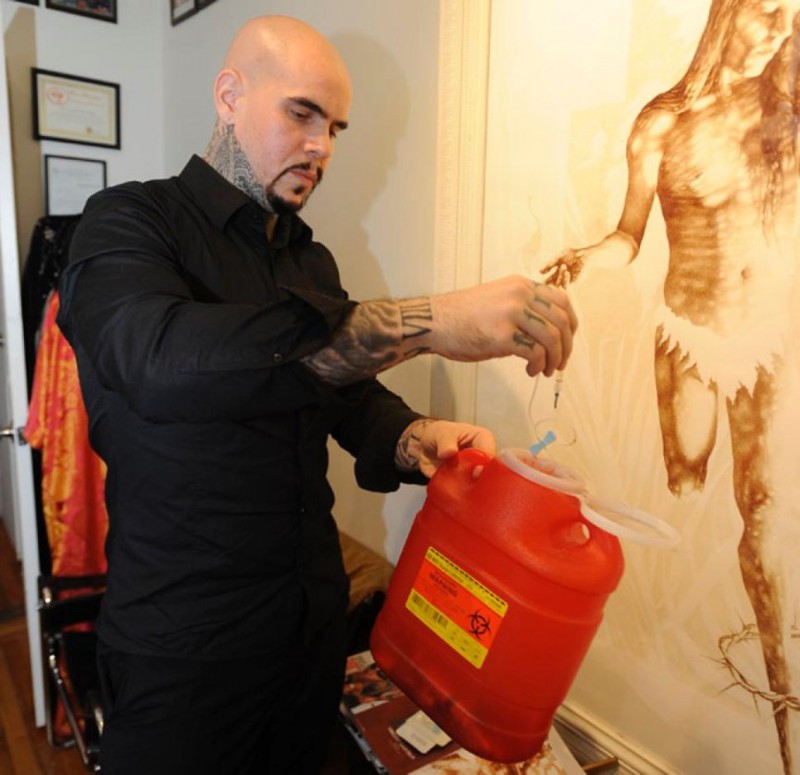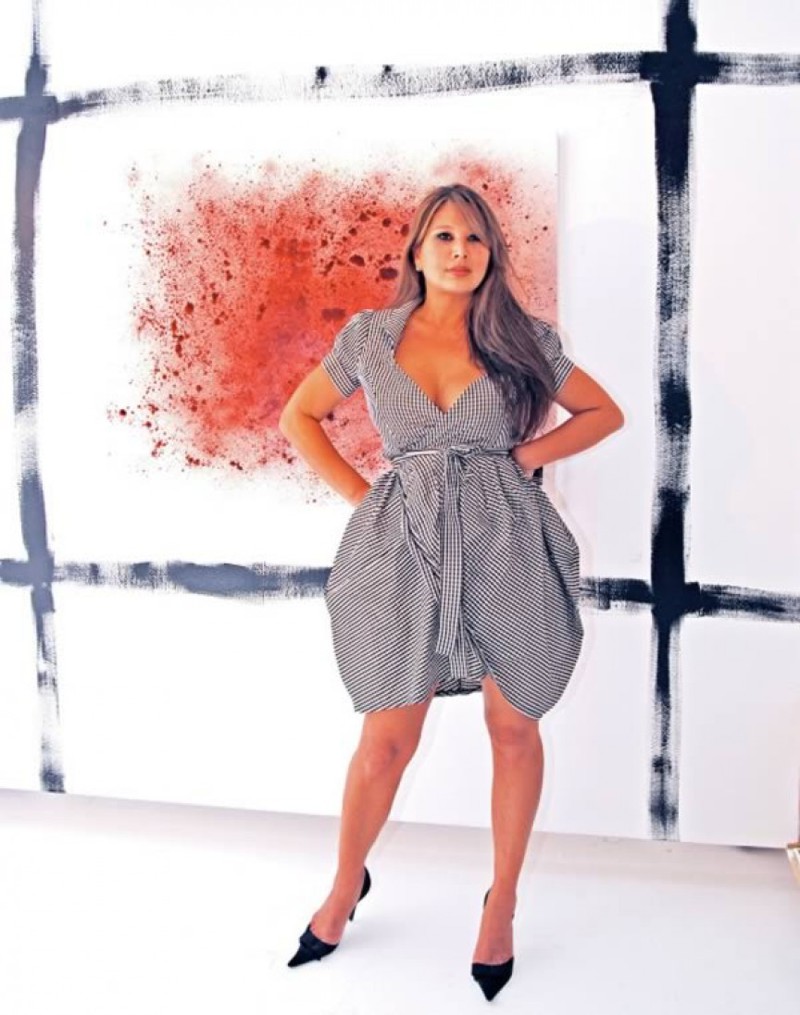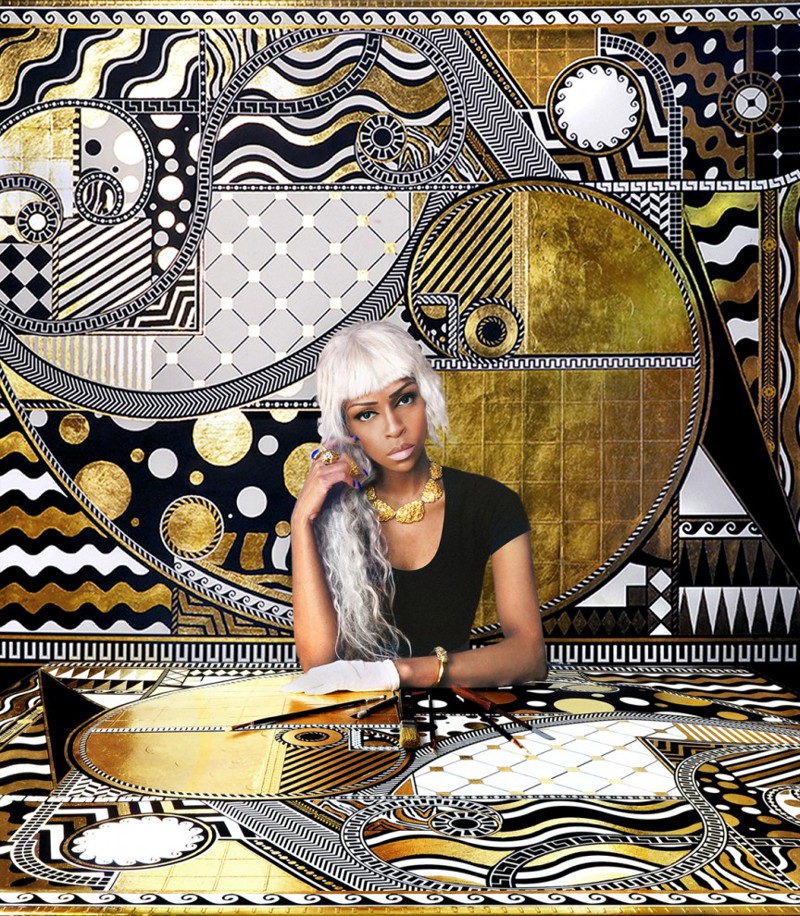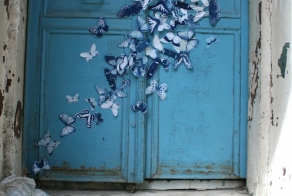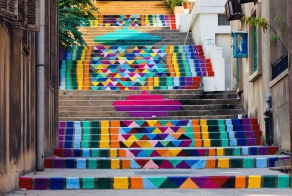75
11
Appreciation of art is largely subjective. While you may not give two figs for the artist or even their style, what you stays with you is whether the composition resonates with you, or not. Speaking of media in art, have ever heard of creating art with microbes? London-based textile designer Natsai Chieza creates art on a textile ‘canvas’, using bacteria. From coffee art to body parts, here are ten more artists creating art with verrrry different media.
10. Steve Spazuk – Soot From A Candle
Fumage is a technique developed in the 1930s that involves allowing soot from a candle or kerosene lamp to collect on a canvas. The picture is developed around the deposits of soot, using brushes, pencils and even more soot. You’re probably thinking ‘Why would you even put a canvas next to a flame’, but the technique actually produces really pretty pieces. Even Dali was said to be a proponent.
Over the past 15 years, Spazuk has created pieces that start as undefined masses of soot and gradually develop into detailed pieces. Spazuk uses feathers, colors and is awesome at creating art using fire. He specializes in intricate portraits, birds, insects and dancing figures.
Over the past 15 years, Spazuk has created pieces that start as undefined masses of soot and gradually develop into detailed pieces. Spazuk uses feathers, colors and is awesome at creating art using fire. He specializes in intricate portraits, birds, insects and dancing figures.
9. Val Thompson – Paint & Ashes
Art is often associated with the happier moments in life, but one artist has found a way to incorporate it into the sad ones too. You may have visited homes that had portraits of their relatives who had passed away. In other homes, you may find an urn with the cremated remains of a relative.
Sunderland-based artist, Thompson decided to combine both to make one final tribute. Mixing the ashes of the deceased with colours, she creates art that will serve as a lasting memory. Creating her first portrait on a whim, she soon found that there were no providers of the service in the market, and people seemed to welcome the idea. She has since set up Ash2Art, where she takes commissions. With her paintings costing up to $1,150, there’s no doubt there is a demand for it.
Sunderland-based artist, Thompson decided to combine both to make one final tribute. Mixing the ashes of the deceased with colours, she creates art that will serve as a lasting memory. Creating her first portrait on a whim, she soon found that there were no providers of the service in the market, and people seemed to welcome the idea. She has since set up Ash2Art, where she takes commissions. With her paintings costing up to $1,150, there’s no doubt there is a demand for it.
8. Honoré Fragonard – Embalmed Human Bodies
2o minutes from the Louvre in Paris lies the Fragonard Museum, a musuem packed with anatomically correct oddities. It’s the brainchild of 18th century professor of anatomy, Honoré Fragonard; who is not to be confused with famous Rococo painter, Jean-Honore Fragonard (they were cousins). Fragonard dabbled in ‘art’, using the medium he knew best; bodies, all kinds of bodies.
Fragonard pioneered a technique which he used to create his famous collection of écorchés (flayed figures). He obtained bodies from executions, medical schools, even fresh graves! He’d embalm them with his proprietary formula, then extract each organ. His art comes from the way he rearranges the organs. In some cases, he swapped the position of organs around the body and even between species.
He finished his art by painting blood vessels in and varnishing the piece to keep it safe. Fragonard created 700 of these pieces, but only around 20 are on display today. Fragonard was also the anatomy professor at Ecole Veterinaire d’Alfort, till he was fired for being a madman and a ‘weirdo.’
Fragonard pioneered a technique which he used to create his famous collection of écorchés (flayed figures). He obtained bodies from executions, medical schools, even fresh graves! He’d embalm them with his proprietary formula, then extract each organ. His art comes from the way he rearranges the organs. In some cases, he swapped the position of organs around the body and even between species.
He finished his art by painting blood vessels in and varnishing the piece to keep it safe. Fragonard created 700 of these pieces, but only around 20 are on display today. Fragonard was also the anatomy professor at Ecole Veterinaire d’Alfort, till he was fired for being a madman and a ‘weirdo.’
7. Milo Moiré – Body Art
Performance art seems to be on the rise and no one is currently more famous than Swiss artist, Milo Moiré. She’s well-known for using her nude body as her canvas. In 2014, she visited Art Basel in Basel, or at least she attempted to. She took the bus to the venue and waited in line for a while, before she was turned away. Why?
Moiré was stark naked! She had painted parts of her body with the names of the items of clothing she should be wearing (“bra” across her chest, “jacket” down her arms), but that was it.
But even that paled in comparison to her exhibition outside Art Cologne in August last year. Calling the project, the “PlopEgg Painting Performance – a Birth of a Picture”, Moire straddled a platform and proceeded to drop paint-filled eggs out of her vagina and onto a canvas. The ‘stained’ canvas was folded up, smoothed out and unfolded to a create a symmetrical splash of art.
Moiré was stark naked! She had painted parts of her body with the names of the items of clothing she should be wearing (“bra” across her chest, “jacket” down her arms), but that was it.
But even that paled in comparison to her exhibition outside Art Cologne in August last year. Calling the project, the “PlopEgg Painting Performance – a Birth of a Picture”, Moire straddled a platform and proceeded to drop paint-filled eggs out of her vagina and onto a canvas. The ‘stained’ canvas was folded up, smoothed out and unfolded to a create a symmetrical splash of art.
6. Hananuma Masakichi – Wood, Dovetail & Glue
Dubbed ‘the artist who recreated himself’, Masakichi was a Chinese artist from the 1880s. When he learned he was dying of TB, he decided to leave his girlfriend a gift she would cherish. He began sculpting a statue of himself, out of between 2,000 – 20, 000 tiny pieces of dark wood.
The sculpture uses neither nails nor screws, all the pieces are fitted together using dovetail joints and glue. Not content with the likeness he had achieved, he drilled microscopic holes for every pore on his body, plucked the corresponding hair from his body and stuck it in the statue. He also pulled his teeth and fingernails to put in the statue. He even added props like his glasses, clothes and a tiny mask he had made.
The final work was so life-like that audiences who came to see it couldn’t tell the difference between the statue and Masakichi, who often posed next to it. The artist died of the disease, a decade later. Damaged in the 1996 California Earthquake, the statue is reported to be currently stored in London’s Ripley’s Odditoriums. Apparently there hasn’t been anyone with the same level of skill as Masakichi, that can properly restore it.
The sculpture uses neither nails nor screws, all the pieces are fitted together using dovetail joints and glue. Not content with the likeness he had achieved, he drilled microscopic holes for every pore on his body, plucked the corresponding hair from his body and stuck it in the statue. He also pulled his teeth and fingernails to put in the statue. He even added props like his glasses, clothes and a tiny mask he had made.
The final work was so life-like that audiences who came to see it couldn’t tell the difference between the statue and Masakichi, who often posed next to it. The artist died of the disease, a decade later. Damaged in the 1996 California Earthquake, the statue is reported to be currently stored in London’s Ripley’s Odditoriums. Apparently there hasn’t been anyone with the same level of skill as Masakichi, that can properly restore it.
5. Marc Quinn – Blood Sculpture
English sculptor Marc Quinn is no stranger to controversy and pushing the boundaries of art. He’s placed a huge statue of the pregnant, disabled artist Alison Lapper in Trafalgar Square. He’s sculpted supermodel Kate Moss in a yoga position (why he chose the one with her ankles and arms wrapped behind her ears, we’ll never know) and another of Moss in 18-carat gold. He’s even sculpted his interpretation of what the inside of a womb looks like, complete with nine large sculptures chronicling the development of a fetus.
But with his ongoing project titled ‘Self’, Quinn outdoes himself. Self is a sculpture of the artist’s head, made from nine pints of his own blood, extracted from his body over a five month period. The sculpture is ‘redone’ every five years, making it a living diary of Quinn’s aging. Quinn hopes that upon his death, all his blood will be drained and used to create one final head.
But with his ongoing project titled ‘Self’, Quinn outdoes himself. Self is a sculpture of the artist’s head, made from nine pints of his own blood, extracted from his body over a five month period. The sculpture is ‘redone’ every five years, making it a living diary of Quinn’s aging. Quinn hopes that upon his death, all his blood will be drained and used to create one final head.
4. Millie Brown – Paint Vomit
We’ve seen blood, fire, actual body parts used to create art, but what about using stuff from inside the stomach? Yup, puke. As crazy as it sounds, there is an artist that uses vomit to ‘paint’.
Claiming traditional painting methods made her sick, 27-year-old Millie Brown has trained herself to puke on demand. Swallowing colored milk, she pukes it back up, aiming to splash it in patterns on a white canvas. Her process involves not eating for two days prior to a performance, allowing her stomach to be devoid of any food particles. She claims this allows the colored milk that she regurgitates to come up “beautiful and of pure color”. She also says she allows a one month break between performances.
Her unique ability has landed her parts in a Lady Gaga video and she regularly features in Ripley’s Believe it or Not! One 2011 piece, Nexus Vomitus, was created with an operatic accompaniment and it sold for $2,400.
Claiming traditional painting methods made her sick, 27-year-old Millie Brown has trained herself to puke on demand. Swallowing colored milk, she pukes it back up, aiming to splash it in patterns on a white canvas. Her process involves not eating for two days prior to a performance, allowing her stomach to be devoid of any food particles. She claims this allows the colored milk that she regurgitates to come up “beautiful and of pure color”. She also says she allows a one month break between performances.
Her unique ability has landed her parts in a Lady Gaga video and she regularly features in Ripley’s Believe it or Not! One 2011 piece, Nexus Vomitus, was created with an operatic accompaniment and it sold for $2,400.
3. Vincent Castiglia – Blood Painting
New York born Castiglia, chooses to paint exclusively in iron oxide on paper. Doesn’t sound like much till you learn iron oxide is basically human blood. Don’t worry, Castiglia isn’t out robbing graves or kidnapping people for his ‘paint’. The artist regularly draws his own blood to create his figurative paintings.
With his focus on the themes of birth, life, human condition, mortality and death, blood seems like the right option, but draining enough for a tableaux can be debilitating. The artist pencils in a sketch, before extracting up to 15 vials of his own blood, to complete his painting. Describing his works as ‘hemorrhages’, Castilgia is one of the few artists to be featured the H.R. Giger Museum, in Switzerland.
With his focus on the themes of birth, life, human condition, mortality and death, blood seems like the right option, but draining enough for a tableaux can be debilitating. The artist pencils in a sketch, before extracting up to 15 vials of his own blood, to complete his painting. Describing his works as ‘hemorrhages’, Castilgia is one of the few artists to be featured the H.R. Giger Museum, in Switzerland.
2. Lani Beloso – Menstrual Cycle
Lani Beloso’s ‘Period Piece’ is literally that, a work of art, created from her menstrual flow. When the Hawaii-based artist realized she had a condition called menorrhagia, which made her periods heavier than normal, she decide to measure the flow and put it to ‘good use’.
She literally sat over a canvas and let the blood flow, for her first piece. Since then, she collects the blood and applies it to a canvas, then ‘seals’ it in with resin. She created 13 canvasses chronicling a years’ worth of periods. She claimed the act was cathartic and allowed her accept the otherwise painful menstrual cycle. She is currently taking time off painting with blood, but is open to other applications of her flow. One strange effect was that her periods became much less painful after that year of creating ‘art’.
She literally sat over a canvas and let the blood flow, for her first piece. Since then, she collects the blood and applies it to a canvas, then ‘seals’ it in with resin. She created 13 canvasses chronicling a years’ worth of periods. She claimed the act was cathartic and allowed her accept the otherwise painful menstrual cycle. She is currently taking time off painting with blood, but is open to other applications of her flow. One strange effect was that her periods became much less painful after that year of creating ‘art’.
1. Lina Viktor – Gold
Self-proclaimed nerd, Viktor eschews the use of any bodily fluids to create her art. The 28-year old creates gilded works of art that strike a balance between medieval regality and contemporary pop culture. Her obsession with gold led her to leave a career in film and focus on creating physical art pieces. The nerd involves quite a bit of math in her work, adding one-third more gold to each new painting as the previous one.
The concept artist chooses to use the more expensive gold leaf instead of ‘cheap’ gold paint. Costly? Yes, but Viktor says she won’t have her vision interpreted any other way. Occasionally adding splashes of deep blacks, stark whites and vivid blues, Viktor cites the late Gianni Versace as her role model.
Showcasing her art from Dubai to Nigeria, Viktor was also part of “WU HA | 20 20”, the Wu-Tang Hybrid Arts initiative that celebrated the 20th anniversary the Wu-Tang Clan.
The concept artist chooses to use the more expensive gold leaf instead of ‘cheap’ gold paint. Costly? Yes, but Viktor says she won’t have her vision interpreted any other way. Occasionally adding splashes of deep blacks, stark whites and vivid blues, Viktor cites the late Gianni Versace as her role model.
Showcasing her art from Dubai to Nigeria, Viktor was also part of “WU HA | 20 20”, the Wu-Tang Hybrid Arts initiative that celebrated the 20th anniversary the Wu-Tang Clan.
Source:
Ссылки по теме:
- Ukranian tatoo-master and his stunning works
- 14 Truly Awesome Photos Of Tattoos Throughout History
- Street Art Project Spreads 4,000 Blue Butterflies Throughout the World
- 25 Magical Fairy Tale Art Renditions
- Very realistic sculpture by by Rovo Jin


